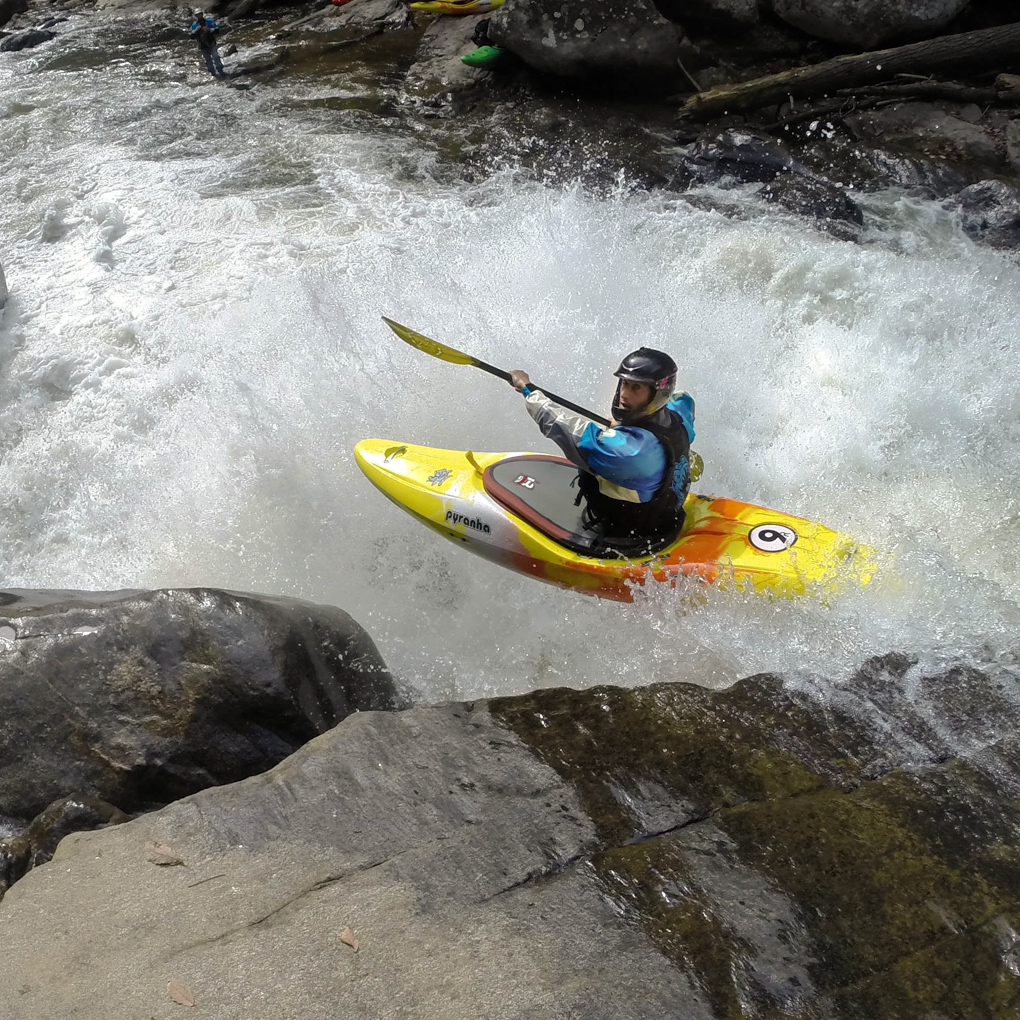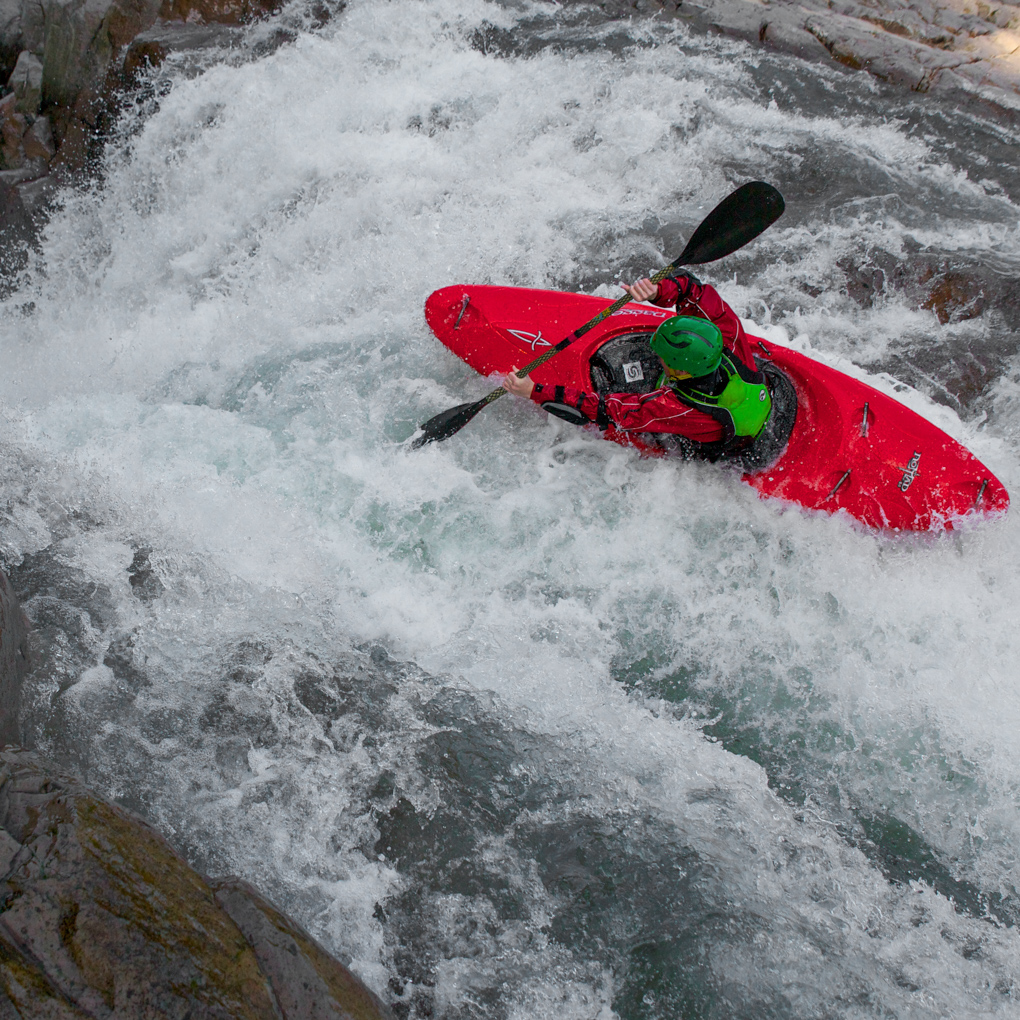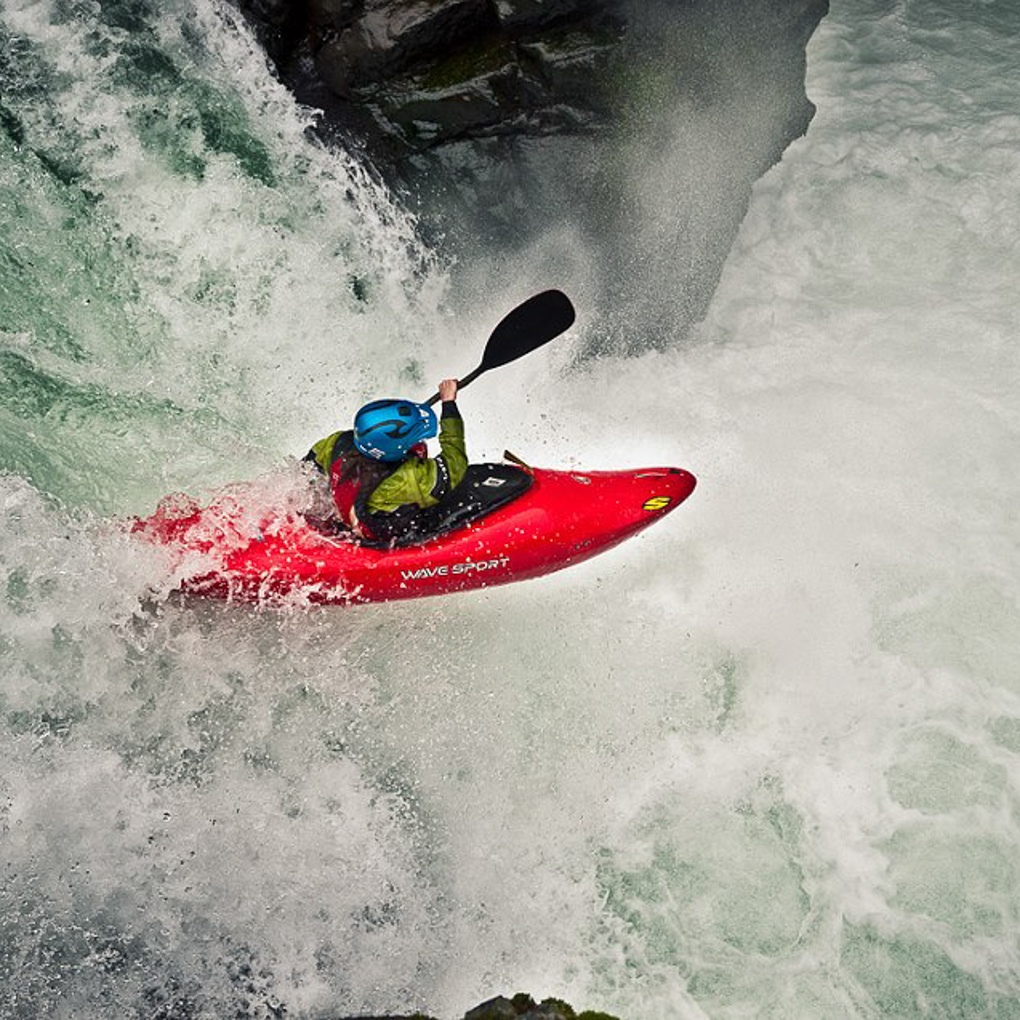A boof isn’t just a river feature that you paddle over. It’s a stroke. Boofing is one of the most crucial skills in a creek boater’s repertoire, and it also happens to be one of the most fun movements in whitewater kayaking.
A boof stroke keeps the kayak’s nose from dropping down over vertical drops and helps to propel us away from ledges, waterfalls, and holes.
Perfecting a good boof stroke is not easy. In fact, it is a skill that none of us ever stop tweaking and perfecting. Boofing is hard to perfect in part because there are a million different situations in which we boof– vertical ledges, sloping slides, rocks, deep water, holes– the list goes on, and there isn’t one particular technique that will work across all situations.
Everyone conceptualizes boofing slightly differently, and no single explanation will make sense to all readers. So we’ve brought in seven professional boofers to weigh in on the subject, and tell us how they think about the boof. Read on to see their tips on how to perfect the elusive boof stroke, and how they adjust their technique to fit with their current creek boat.
Each panelist is using his or her own terminology to express their own unique thought process about this technique.
Dave Fusilli

Team Pyranha Kayaks
Website: Demshitz
Patience is the key to sticking the perfect boof stroke. You can pull your knees to your chest, pull at that paddle as hard as you can, or have a boat that is shaped like a banana, but if you do not pull on your stroke at the right time you will continue to beater on your boof. I try to keep my body pretty forward when boofing. It often looks as if good boofers are not taking much of a stroke because they are not. I tighten my core as I pull on the paddle and stay forward instead of pulling back.
Spot your lip, spot your landing. You need to be able to see the landing to know when to pull. Most boofs should be late boofs. The only time you do not need to spot your landing is if you are using a rock to kick your boat into a boof. In that case just charge that stout and fly off it.
My current kayak of choice is the Pyranha 9R. It is pretty narrow, which I love because it makes it easy to do an edge-to-edge boof. If I lean a boat way over on edge it takes way less energy to get the bow up. Why? Because the stroke causes the stern of the edged-kayak to cut into the water and raises the bow. To master this technique, it helps a ton to get in your freestyle kayak and figure out what an edge is. This movement will make a lot of sense if you have ever tried to double pump or cartwheel a freestyle boat.
Leif Anderson

Team Fluid Kayaks
Website: Leif and Natalie
My first boof strokes were almost 15 years ago, and I’ve worked on many aspects of the move since then. This is a skill that I continue to refine throughout my paddling career. Currently I’m focusing on two things. The first thing is lateness—boofing too early can destroy your boof. Even after many years, I still have to force myself to wait longer for the right moment. The second aspect is body movement. I try to ollie my boat, similar to how I would when bouncing a freestyle boat on a wave. I think about pushing my ankles down right before my stroke activates, and pull them up at the right time.
One thing I see frequently is bad boat placement, which is a little subtle. I sometimes see paddlers these days with really powerful boof strokes but lacking in other skills. This can get you in trouble because no matter how majestic your boof is, it won’t work if your boat isn’t lined up in the right spot. Even being off by just a few inches can lead to tapping a rock at the wrong time, or missing the rock you wanted to hit, which has drastic effects on your boof. If you are going to come close to a rock, it’s usually best to plan to ram into it and boof over it. It’s easier to hit it on purpose than to miss it cleanly.
I started trying that newfangled lean boof, and in the process I realized how much more boof is available when the boat is up on edge. The Fluid Bazooka doesn’t have a ton of rocker, so by tilting it on edge, the edge’s waterline profile becomes the new effective rocker profile, which allows me to get my bow higher. I first thought about the different profile thing after seeing a video by Rafa Ortiz, but it wasn’t until I tried really leaning way over that I realized just how much farther I could afford to lean on my edge.
Quinn Connell

Head coach at World Class Kayak Academy
Website: World Class Kayak Academy
As others on the panel have noted, timing is a huge part of getting a successful boof stroke. I like to have some speed approaching the lip, timing my strokes so that I am able to reach over the lip to plant a blade. As I roll over the lip and spot my landing, I use my paddle as a support to anchor my upper body. This gives me the leverage to crunch my legs (and boat) up towards my face. I like to think about engaging my full core at once, almost like a wound spring. Stay forward and land with the opposite blade in the water.
One of the most common mistakes I see developing paddlers make is leaning back at the lip of a drop. This is a result of trying to use your arms rather than core and legs to lift the bow of the boat. Really emphasizing reaching forward with the stroke can help counteract this habit. Another key element that I teach my students is always to land with their next stroke ready. This forces you to stay forward in a more athletic position and will help you accelerate out of the landing and successfully navigate whatever is downstream.
I learned to keep my bow up paddling a playboat out in the surf off the Oregon coast, and the technique I’m about to talk about works just as well for clearing holes or water boofs in a creek boat. Approach the drop with your bow slightly off-angle (maybe 30 degrees from the direction of the current). As you reach the lip, you want to raise your bow, almost like a low-angle cartwheel. To accomplish this, raise your downstream edge slightly and take a combination sweep/boof stroke on the upstream side. At the same time, crunch your knees upwards and look downstream to bring your boat parallel to the current. This will cause your bow to “squirt” up slightly and clear the hole. This technique is super fun and also works well with old school river runners with a low-volume stern, like the RPM.
Kim Russell

Team Wave Sport Kayaks
Website: kimrussell
One of the most common mistakes I see that leads to a missed boof stroke is improper timing. From experience, you can be holding your paddle perfectly vertical (and close to your boat), be positioned at perfect spot at the lip, be holding the perfect boat angle, and STILL mess up your boof if your timing is off. Timing is everything.
The best boof advice I was given as a paddler was to “Spot your landing.” As you’re approaching the lip of a drop, do not pull on your boof stroke until you can see your landing zone. Look where you want to go, and when you do finally pull your stroke, keep your body forward over your cockpit, while engaging your abdominals. Physiologically, this will provide power to your stroke as well as protect your back when you land.
Body positioning can significantly impact the boof, particularly when you’re a smaller individual looking for all the advantage you can get. For example, a lot of paddlers will lean forward as far as possible when planting their stroke and then violently lean backward in the attempt to generate maximum power, ending up in a sort of Hail-Mary over the falls. Remember, the boof is not something to be muscled through. When done correctly, it should feel easy, and require little work. Look where you want to go, spot your landing, and pull the trigger.
My current boat of choice is the Wave Sport Recon 70. I find it faster than my Diesel, allowing me to land out away from drops, resurfacing quickly, upright and balanced. Most of the time, due to the significant amount of bow rocker on the Recon, the boat boofs easily and I find myself stomping my bow down on most drops.
NEXT: Bryan Kirk, Clay Wright, and David Spiegel share their tips.

It would be awesome if you guys could do these features on skiing techniques as well.